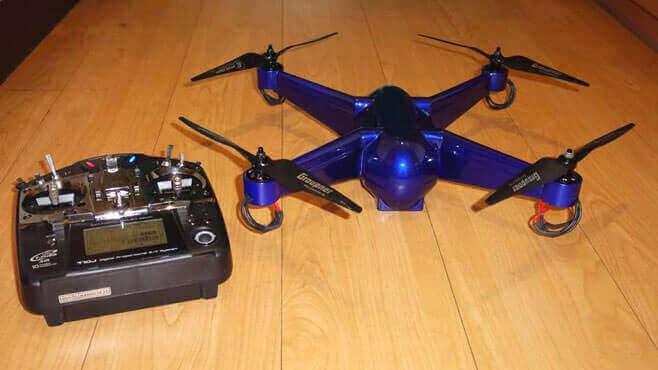Nanyang Technological University PhD student Phillip Keane made a robust 3D printed quadcopter drone with ULTEM 9085 material.
One application for which additive manufactuing has proven immensely valuable is the production of drones. The use of a 3D printer allows users to create drone components that can be easily replaced and upgraded.
But in order to produce an aerial vehicle capable of withstanding extreme environments or temperatures, using the right material is oftentimes just as important as the design itself.
This is exactly the case with the drone designed by PhD student Phillip Keane in the Singapore Centre for 3D Printing at Nanyang Technological University (NTU). Keane created the quadcopter while researching various applications of the high-strength ULTEM 9085 material from 3D printing titan Stratasys.
Despite the high temperatures involved with printing ULTEM 9085, Keane managed to embed electronics into the drone during the production process. This professional-grade material requires a print chamber temperature of 160°C and an extruder temperature around 300°C.
The use of the aerospace-grade 3D printing material enabled Keane to create an exceptionally robust quadcopter capable of withstanding temperatures that exceed the limitations of commercial drones.
https://www.youtube.com/watch?v=bEbK5p4Bx6o
This 3D Printed Quadcopter Can Fly Where Others Can’t
The PhD student also discovered some optimal methods to embedding electronics hardware into an object mid-print.
While the 3D printing process was completed in under 14 hours, the PhD student paused the operation three times to embed the electronics within the chassis. The printer used to produce the drone was the industrial-grade Stratasys Fortus 450mc 3D Printer.
During the project, he realized that inserting the electronics hardware directly reduced the need for extra mounting fixtures. This is especially advantageous for objects where weight reduction is critical.
Additionally, by embedding electronics mid-print, he was able to completely seal the hardware within the structure, offering increased protection in high or low pressure surroundings.
The drone’s structural components and electronics can easily withstand over 150°C for several hours. The motors use high-temperature rated neodymium magnets, enabling the quadcopter to function in 180°C temperatures before they start to lose power.
Though the drone is just a prototype, Keane believes that a more refined version could be used by firefighters looking to investigate a dangerous environment. It could even be used by National Geographic to map the terrain of volcanic regions.
As for his next ULTEM-related project, Keane has considered 3D printing a drone capable of operating underwater. Though more advanced 3D printing materials are always welcome in the 3D printing industry, this particular project proves we’re already capable of creating some remarkable things.
Source: Stratasys

License: The text of "3D Printed Quadcopter Can Withstand Extreme Temperatures" by All3DP is licensed under a Creative Commons Attribution 4.0 International License.